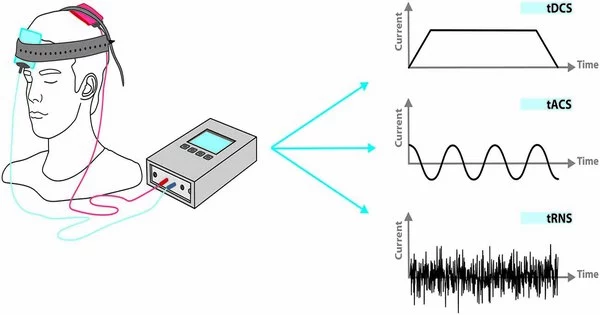Electrical noise stimulation of the brain is an intriguing area of research that has promise for improving a variety of cognitive tasks, including math learning. This approach is also known as transcranial electrical noise stimulation (tES) or stochastic resonance. The main idea is to deliver a controlled quantity of electrical noise to the brain via electrodes put on the scalp. In certain situations, this noise can modify neuronal activity and potentially improve brain function.
According to a new study from the Universities of Surrey and Oxford, Loughborough University, and Radboud University in the Netherlands, electrical noise stimulation can aid improve arithmetic learning in those who struggle with the subject.
Researchers explored the effect of neurostimulation on learning in this one-of-a-kind study. Despite the increased interest in this non-invasive procedure, little is known about the neurophysiological changes that occur as a result of it and their impact on learning.
These findings highlight that individuals with lower brain excitability may be more receptive to noise stimulation, leading to enhanced learning outcomes, while those with high brain excitability might not experience the same benefits in their mathematical abilities.
Dr Nienke van Bueren
Electrical noise stimulation over the frontal portion of the brain boosted the mathematical abilities of those whose brains were less aroused (by mathematics) before the stimulation. There was no improvement in mathematics scores in individuals who experienced a high level of brain stimulation during the initial evaluation or in the placebo groups.
Electrical noise stimulation, according to researchers, operates on sodium channels in the brain, interfering with the cell membrane of neurons and increasing cortical excitability.
Professor Roi Cohen Kadosh, Professor of Cognitive Neuroscience and Head of the School of Psychology at the University of Surrey who led this project, said:
“Learning is key to everything we do in life — from developing new skills, such as driving a car, to learning how to code. Our brains are constantly absorbing and acquiring new knowledge. Previously, we have shown that a person’s ability to learn is associated with neuronal excitation in their brains. What we wanted to discover in this case is if our novel stimulation protocol could boost, in other words excite, this activity and improve mathematical skills.”

A total of 102 individuals were selected for the study, and their mathematical abilities were examined by a series of multiplication tasks. The participants were subsequently divided into four groups: a learning group that received high-frequency random electrical noise stimulation, an overlearning group that practiced multiplication past the point of competence with high-frequency random electrical noise stimulation, and a control group that did not receive high-frequency random electrical noise stimulation.
The remaining two groups were made up of a learning and an overlearning group, but they were subjected to a sham (i.e., placebo) condition, which was an experience similar to genuine stimulation but without the use of large electrical currents. To quantify brain activity, EEG recordings were made at the start and end of the stimulation.
Dr Nienke van Bueren from Radboud University, who led this work under Professor Cohen Kadosh’s supervision, said:
“These findings highlight that individuals with lower brain excitability may be more receptive to noise stimulation, leading to enhanced learning outcomes, while those with high brain excitability might not experience the same benefits in their mathematical abilities.”
“What we have discovered is how this promising neurostimulation works and under what conditions the stimulation protocol is most effective,” Professor Cohen Kadosh continues. This discovery could not only open the way for a more customized approach in a person’s learning path, but it could also throw light on the best time and length for its use.”





